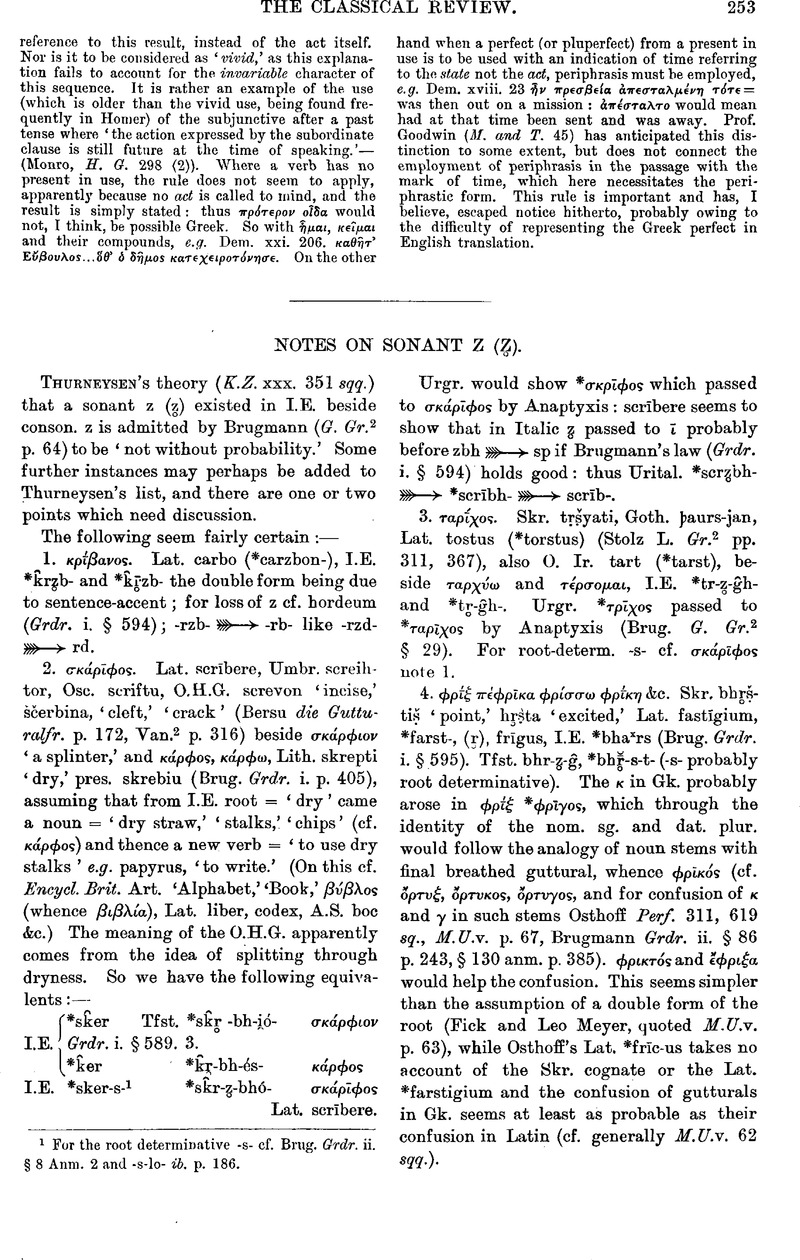No CrossRef data available.
Article contents
Notes on Sonant Z (ẓ)
Published online by Cambridge University Press: 27 October 2009
Abstract

- Type
- Review Article
- Information
- Copyright
- Copyright © The Classical Association 1891
References
page 253 note 1 For the root determinative -s- cf. Brug. Grdr. ii. § 8 Anm. 2 and -s-lo- ib. p. 186.
page 254 note 1 Velar g is printed g in italic type.
page 254 note 2 Mr. Darbishire remarks that Lat. pēdo shows an I. E. p- and that there is no law that ![]() would voice a preceding breathed consonant; but even assuming an I. E. p- in such forms as vowel + -bzd + vowel, z can be pronounced as a consonant and would then voice the preceding breathed consonant, hence b- would spread by analogy to forms where z was of necessity pronounced as a sonant.
would voice a preceding breathed consonant; but even assuming an I. E. p- in such forms as vowel + -bzd + vowel, z can be pronounced as a consonant and would then voice the preceding breathed consonant, hence b- would spread by analogy to forms where z was of necessity pronounced as a sonant.
page 254 note 3 Mr. Conway points out to me that the old Oscan form of dat. plur. luisarifs (Büch. Rh. Mus. 114 (1889) p. 328), where -fs = original *-bh**s, gives an additional proof of pro-ethnic Ital. *-bh**s as dat.- abl. instr. plur. suffix.
page 254 note 4 Cf. also Umbr. fratrus (? frat![]() fs) karnus (? kar
fs) karnus (? kar![]() fs). Lindsay, Classical Review, ii. p. 277.
fs). Lindsay, Classical Review, ii. p. 277.
page 254 note 5 The nom. sg. -és appears to have arisen in proethnic Italic from adjectives in -ēs by the proportion e.g. *pub-![]() -bh
-bh![]() os: pub-ēs = *sed-
os: pub-ēs = *sed-![]() -bh
-bh![]() os: sedēs. Such an explanation would at any rate avoid the assumption of an I.E. fem, noun in -ēs (Brug. Grdr. ii. p. 397 Anm.) for which there is no evidence outside Italic.
os: sedēs. Such an explanation would at any rate avoid the assumption of an I.E. fem, noun in -ēs (Brug. Grdr. ii. p. 397 Anm.) for which there is no evidence outside Italic.




